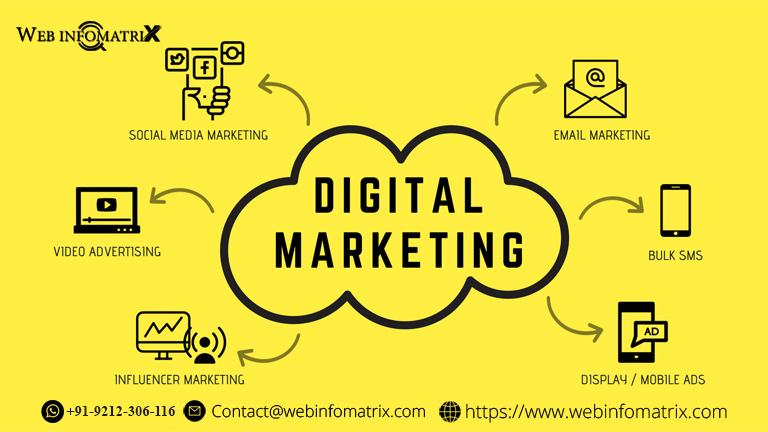Evergreen content is a cornerstone of successful content marketing. Unlike news articles or timely posts that lose relevance over time, evergreen content maintains its value and continues to attract readers long after it’s published. In this comprehensive guide, we'll explore what evergreen content is, why it's crucial for your strategy, and how to create it effectively.
What is Evergreen Content?
Evergreen content refers to content that remains relevant and useful to readers long after its initial publication. It doesn’t rely on current events or trends but focuses on timeless topics that provide ongoing value. Think of it as content that’s always in season, regardless of the latest news cycle or industry shifts.
Characteristics of Evergreen Content
Evergreen content shares several key characteristics
- Timelessness The content should address topics that are always relevant. For instance, a guide on basic SEO principles is likely to remain useful as long as SEO is important.
- High Quality It must provide valuable, accurate information. Well-researched, comprehensive content tends to stay relevant longer.
- Search Engine Optimization (SEO) Properly optimized evergreen content can continue to attract organic traffic for an extended period.
- Engagement It should encourage reader interaction, whether through comments, shares, or further reading.
Why Evergreen Content is Essential for Your Content Strategy
Evergreen content offers several benefits that make it a valuable asset in any content strategy
1. Consistent Traffic Generation
Evergreen content can drive consistent traffic to your website over time. Unlike timely posts that may quickly become outdated, evergreen content continues to attract readers and search engine traffic. This steady flow of visitors can lead to more conversions and brand awareness.
2. Cost-Effectiveness
Creating evergreen content is a cost-effective approach because it can be used repeatedly. Once published, it doesn’t require frequent updates or promotion like timely content. This allows you to focus your resources on other aspects of your marketing strategy.
3. Authority Building
High-quality evergreen content can establish your authority in your niche. By providing valuable information on relevant topics, you position yourself as an expert, which can enhance your credibility and influence within your industry.
4. Improved SEO Performance
Evergreen content that is well-optimized for search engines can improve your website’s search rankings. It often attracts backlinks and social shares, which further boosts your SEO efforts. Over time, this can result in increased organic traffic and better visibility in search engine results pages (SERPs).
How to Create Evergreen Content
Creating effective evergreen content involves several key steps. Here’s a step-by-step guide to help you craft content that stands the test of time
1. Identify Timeless Topics
Start by identifying topics that have long-term relevance in your industry. These should be subjects that are not subject to rapid changes or trends. For example, in digital marketing, topics like “SEO Basics” or “Content Marketing Strategies” are evergreen because they address fundamental concepts that remain relevant.
Researching Evergreen Topics
To find evergreen topics, consider the following approaches
- Audience Questions Look at the questions your audience frequently asks. These can provide insights into the topics they find valuable and timeless.
- Competitor Analysis Analyze the content your competitors are producing. Identify which topics they cover that remain popular over time.
- Keyword Research Use keyword research tools to find search terms related to your niche that have consistent search volume throughout the year.
2. Create High-Quality Content
High-quality content is crucial for evergreen success. Ensure that your content is
- Comprehensive Cover the topic thoroughly, providing in-depth information and addressing potential questions.
- Accurate Provide accurate and up-to-date information. While the topic may be evergreen, the data should be current and reliable.
- Engaging Write in a clear, engaging style that keeps readers interested. Use visuals, examples, and actionable tips to enhance the content.
Structuring Your Content
A well-structured blog post enhances readability and engagement. Use clear headings and subheadings to break up the text, and include bullet points or numbered lists to highlight key information.
3. Optimize for SEO
Proper SEO optimization ensures that your evergreen content remains discoverable by search engines. Focus on the following SEO elements
- Keywords Incorporate relevant keywords naturally throughout your content. Avoid keyword stuffing and prioritize readability.
- Meta Tags Write compelling meta titles and descriptions that accurately reflect the content and encourage click-throughs.
- Internal Linking Link to other relevant content on your website to keep readers engaged and improve SEO.
- External Links Include authoritative external links to support your content and provide additional resources.
4. Update Regularly
While evergreen content is designed to be timeless, it’s still important to review and update it periodically. This ensures that the information remains accurate and relevant. Set a schedule to revisit your evergreen content and make necessary updates based on new developments or changes in your industry.
Examples of Evergreen Content
Here are a few examples of evergreen content that can be effective for different industries
1. How-to Guides
How-to guides provide step-by-step instructions on performing a specific task. They are highly valuable because they offer practical, actionable information. For example, a how-to guide on “How to Start a Blog” or “How to Create a Social Media Strategy” can attract readers who are looking for detailed instructions.
2. Lists and Roundups
Lists and roundups compile useful resources or tips on a particular topic. Examples include “10 Essential SEO Tips for Beginners” or “Top 5 Tools for Content Marketing.” These types of content are easy to read and share, making them ideal for evergreen purposes.
3. Glossaries
Glossaries define key terms and concepts within your industry. They serve as a valuable reference for readers who want to understand specific terminology. For instance, a “Digital Marketing Glossary” can help newcomers familiarize themselves with industry jargon.
4. Case Studies
Case studies provide in-depth analyses of specific examples or success stories. They can offer valuable insights and lessons that remain relevant over time. For example, a case study on “How Company X Increased Their Traffic by 200%” can continue to be useful for those looking for successful strategies.
Promoting Evergreen Content
Even though evergreen content is designed to maintain its value over time, effective promotion is still crucial. Here are some strategies to promote your evergreen content
1. Social Media
Share your evergreen content on social media platforms to reach a wider audience. Schedule regular posts to keep the content visible and encourage engagement. Use relevant hashtags and encourage your followers to share the content with their networks.
2. Email Marketing
Include your evergreen content in your email newsletters. Highlight valuable pieces and provide links for subscribers to read more. This approach helps keep your audience engaged and drives traffic to your website.
3. Content Repurposing
Repurpose your evergreen content into different formats to reach various audiences. For example, create infographics, videos, or podcasts based on your original content. This allows you to leverage your evergreen material in new and engaging ways.
4. SEO and Link Building
Focus on ongoing SEO efforts to ensure your evergreen content remains discoverable. Build backlinks from authoritative sources and engage in link-building activities to improve your content’s search rankings.
Measuring the Success of Evergreen Content
To gauge the effectiveness of your evergreen content, consider the following metrics
1. Traffic and Engagement
Monitor the traffic and engagement levels of your evergreen content. Track metrics such as page views, time on page, and bounce rate to assess how well the content is performing.
2. Search Rankings
Evaluate the search rankings of your evergreen content for relevant keywords. Improved rankings indicate that your content is performing well in search engine results.
3. Conversion Rates
Analyze the conversion rates associated with your evergreen content. Determine if it is driving desired actions, such as sign-ups, purchases, or downloads.
4. Social Shares and Comments
Track social shares and comments to understand how well your content resonates with readers. Positive feedback and high engagement levels are indicators of successful evergreen content.






















